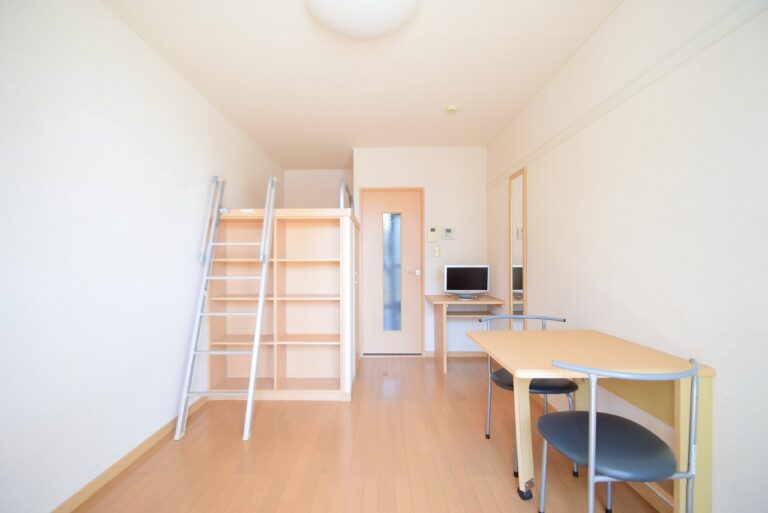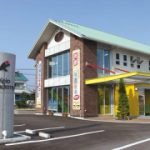
Japanese apartment rental systems are infamous among foreigners hoping to live in this area of the world. What starts off as a dream quickly becomes complicated by the numerous fees and other unexpected expenses that inevitably crop up as people start researching their options.
I was lucky to have a very helpful employer when I came to Japan that guided me through the process of finding an apartment. As someone who only spoke conversational Japanese, I can only imagine how difficult this would have been alone.
My first apartment ended up being a 1k Leopalace apartment, the very mention of which has probably made about half of the people reading this cringe. Firstly, for its size, and secondly, for the name’s reputation.
I’m here to make the case for why you shouldn’t automatically write off Leopalace as a good first apartment in Japan, especially if you only plan to stay for a year or two.
Easy Contracts
First of all, and maybe one of its biggest selling points, is the contract. Signing it is a fairly quick, painless process. Once you’ve decided on an apartment, you’ll provide Leopalace with some general personal and bank account information. You might have the option to pay your rent manually, but I recommend signing up for automatic withdrawals so there’s no chance of forgetting.
While the startup fees were proportionally steeper than the one-month deposit system in my home country, I didn’t spend the thousands and thousands of dollars I had heard horror stories about online. Indeed, the numerous fees that regular Japanese apartments charge, such as reikin (礼金) and shikikin (敷金), can amount to $2,000 or more just to move in. The startup fees I paid for my Leopalace apartment were $1141.92, and that included my first two months’ rent.
Here’s a list of the most common fees to look out for when renting:
| Fee Type | Kanji | Description |
|---|---|---|
| Key Money (Reikin) | 礼金 | Non-refundable “gift” to the landlord, typically equivalent to one to two months’ rent. |
| Security Deposit (Shikikin) | 敷金 | Refundable deposit held by the landlord, usually equivalent to one to two months’ rent. |
| Monthly Rent (Yachin) | 家賃 | The amount paid monthly for the apartment. |
| Maintenance Fee (Kanrihi) | 管理費 | Monthly fee for building maintenance and management. |
| Renewal Fee (Koshinryō) | 更新料 | Fee paid upon renewal of the lease contract, often equivalent to one month’s rent. |
| Guarantor Fee (Hoshoninryō) | 保証人料 | Fee for a guarantor service, typically equivalent to one month’s rent or more. |
| Agent Fee (Chūkai Tesuryō) | 仲介手数料 | Fee for using a real estate agent’s services, usually equivalent to one month’s rent. |
| Insurance Fee (Hokenryō) | 保険料 | Monthly fee for rental insurance, covering liability and property damage. |
| Utility Fees (Kōnetsuhi) | 光熱費 | Costs for electricity, water, gas, and other utilities, typically paid monthly. |
| Internet/TV Fees | インターネット/テレビ料金 | Monthly charges for internet and television services, if not included in the rent. |
| Cleaning Fee (Senyōhi) | 洗濯費 | One-time fee for cleaning the apartment before moving in or out. |
| Parking Fee (Chushajō-ryōkin) | 駐車場料金 | Monthly fee for parking, if applicable. |
After trading stories with friends about moving apartments in Japan, I’m eternally grateful for Leopalace’s cancellation process. One of them was charged an extra ¥10,000 for repairing general wear and tear from over a 3-year-period. This was on top of multiple fees they paid upon first moving in. On the other hand, when I moved out, I made my final viewing appointment online, showed up for a quick inspection of my apartment and, despite some cosmetic damage to the apartment I felt sure they would charge me for, was simply asked to sign some papers and then sent on my way.
One important thing to note, however, is when your contract stipulates you may cancel without incurring any additional fees. In my case, I would have paid a pretty penny had I moved out within eight months of signing my lease.
Interior
Let’s talk about Leopalace’s other big selling point: they come fully furnished. And trust me, when you’re coming to live by yourself in a foreign country where you don’t speak the language very well (if at all), and aren’t even sure if you’re going to like it enough to stay longer than a year, opening your apartment door for the first time and seeing a washing machine, refrigerator, microwave, stove top, air conditioning unit, table, and chairs will relieve you like no bathroom break ever could.
Now, the extent to which your apartment will be furnished can vary, but in my case I was provided everything listed above (plus WiFi). Not only that, but they were all in great shape – practically new. The only gadget I replaced was the microwave, which I traded for an all-in-one microwave/oven/toaster. The best part is you don’t have to worry about getting rid of anything big when you leave because everything belongs to the rental company.
Addressing some common misconceptions
#1 Neighbors will complain about the noise you make, or you will always be complaining about a neighbor that makes too much noise.
I can only speak for my friend’s and my experiences living in a Leopalace apartment, but neither of us ever had this issue. Beyond when my upstairs neighbor got down from his loft in the mornings, I never heard anything from the people living around me.
Likewise, I never received any complaints despite regularly watching TV or listening to music through a speaker. Of course, I kept the volume reasonable, but I think this courtesy would extend to apartments back in my home country, as well.
#2 The infrastructure is old and poor and you will die in a typhoon.
Similar to any apartment in Japan, depending on the year it was built, it may not be up to current earthquake standards, but that’s something you can and should verify in advance no matter the rental company. This can also protect you from renting an apartment that’s old or in bad condition. One of the best parts about my apartment was actually how new the appliances and shower were.
#3 WiFi can be slooow.
Some people say that certain times of day tend to be slower than others, but in my experience there was no way to predict how cooperative my WiFi would be at any given time. This was probably the most annoying part about living in a Leopalace, however buying my own router would have probably helped with this.
At the very least, it’s nice that their WiFi comes preinstalled. Some apartment buildings in Japan aren’t guaranteed to have the necessary electrical wiring for internet access, and getting this installed requires multiple days of being home on weekdays during work hours.

#4 The kitchen is teeny.
Ah, yes. The infamous Japanese 1K kitchen. If I had 100 yen for every time these apartments went viral for their prison-hallway kitchen, I could buy all of the onigiri in every convenience store within a 5 kilometer radius. You know the one I’m talking about – an A4-sized rectangle of counter space sandwiched between a single (or, if you’re lucky, a double) burner and a teeny kitchen sink. You haven’t lived in Japan until you’ve used your washing machine as an extra counter for the pot of Japanese curry you’ve just made.
I would never argue that this kind of kitchen is ideal or even that enjoyable to work in, but with a foldable chair here and a space-saving dish drainer there, you can maximize your space and make it work for the apartment’s convenience.
At the end of the day, a Leopalace apartment is far from perfect. But, it’s certainly got its perks for the right people. if you’re coming to Japan for the cultural immersion, only plan on staying for a year or two, keep your expectations realistic relative to the country you’re in, or don’t want the stress or financial strain of furnishing an apartment after moving to a foreign country, then you might want to consider a Leopalace as your first apartment.















